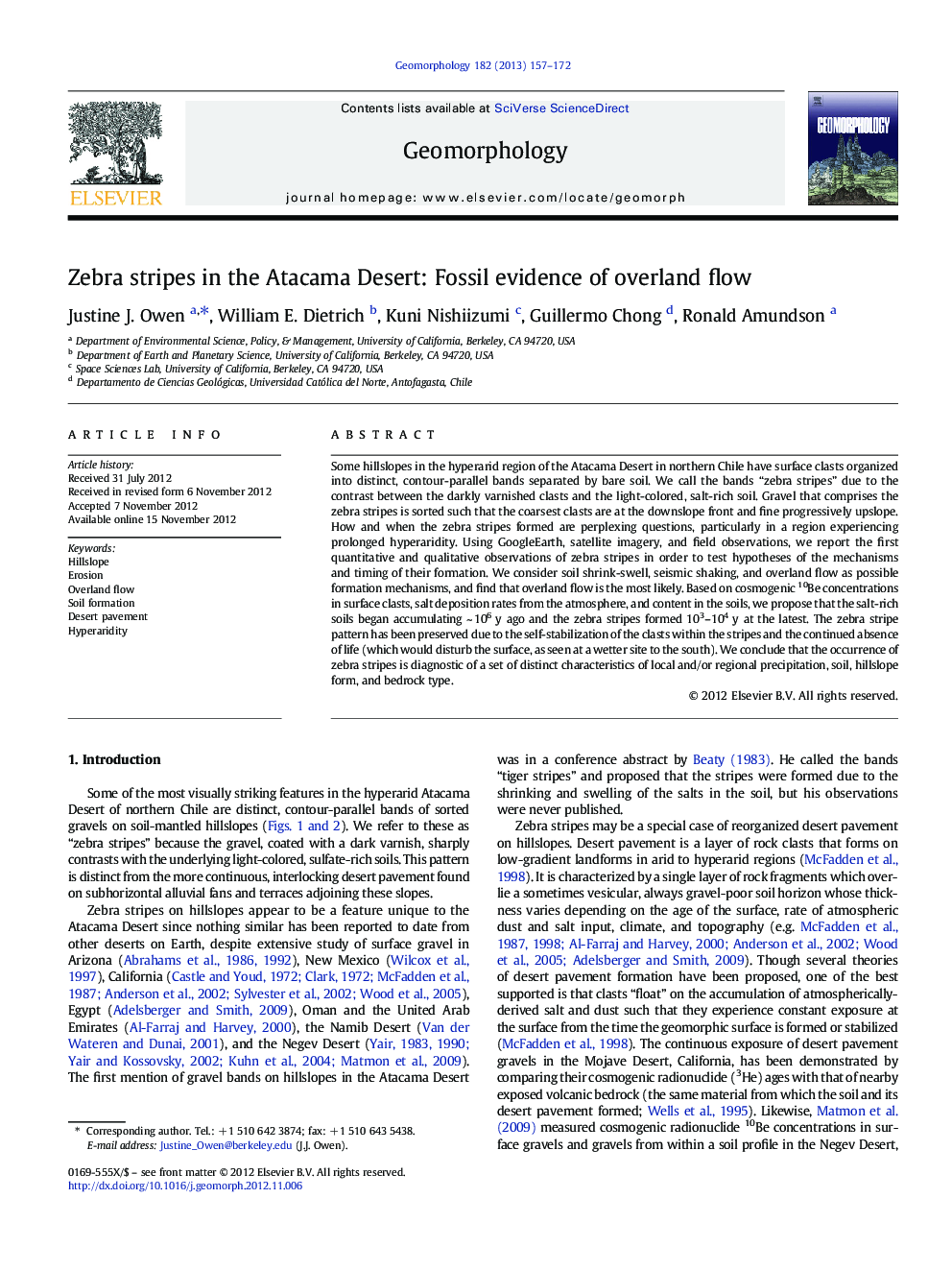| Article ID | Journal | Published Year | Pages | File Type |
|---|---|---|---|---|
| 4685043 | Geomorphology | 2013 | 16 Pages |
Some hillslopes in the hyperarid region of the Atacama Desert in northern Chile have surface clasts organized into distinct, contour-parallel bands separated by bare soil. We call the bands “zebra stripes” due to the contrast between the darkly varnished clasts and the light-colored, salt-rich soil. Gravel that comprises the zebra stripes is sorted such that the coarsest clasts are at the downslope front and fine progressively upslope. How and when the zebra stripes formed are perplexing questions, particularly in a region experiencing prolonged hyperaridity. Using GoogleEarth, satellite imagery, and field observations, we report the first quantitative and qualitative observations of zebra stripes in order to test hypotheses of the mechanisms and timing of their formation. We consider soil shrink-swell, seismic shaking, and overland flow as possible formation mechanisms, and find that overland flow is the most likely. Based on cosmogenic 10Be concentrations in surface clasts, salt deposition rates from the atmosphere, and content in the soils, we propose that the salt-rich soils began accumulating ~ 106 y ago and the zebra stripes formed 103–104 y at the latest. The zebra stripe pattern has been preserved due to the self-stabilization of the clasts within the stripes and the continued absence of life (which would disturb the surface, as seen at a wetter site to the south). We conclude that the occurrence of zebra stripes is diagnostic of a set of distinct characteristics of local and/or regional precipitation, soil, hillslope form, and bedrock type.
